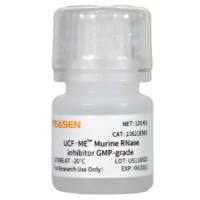Methods for the Isolation and Maintenance of Murine Embryonic Stem Cells
互联网
431
Embryonic stem (ES) cells were first isolated in the 1980s by several independent groups. (1 –4 ). These investigators recognized the pluripotential nature of ES cells to differentiate into cell types of all three primary germ lineages. Gossler et al. (5 ) described the ability and advantages of using ES cells to produce transgenic animals (5 ). The next year, Thomas and Capecchi reported the ability to alter the genome of the ES cells by homologous recombination (6 ). Smithies and colleagues later demonstrated that ES cells, modified by gene targeting when reintroduced into blastocysts, could transmit the genetic modifications through the germline (7 ). Today, genetic modification of the murine genome by ES cell technology is a seminal approach to understanding the function of mammalian genes in vivo. ES cells have been reported for other mammalian species (i.e., hamster, rat, mink, pig, and cow), however, only murine ES cells have successfully transmitted the ES cell genome through the germline. Recently, interest in stem cell technology has intensified with the reporting of the isolation of primate and human ES cells (8 –11 ).









